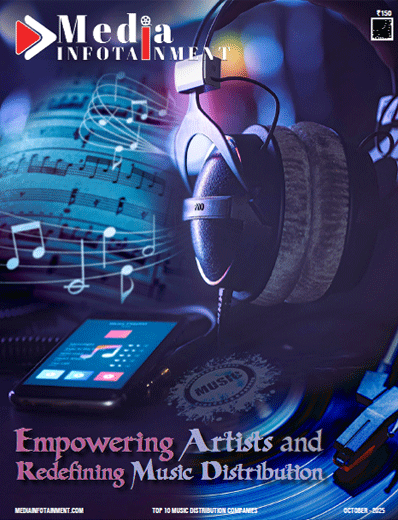How AI Will Disrupt Creative Design Sector in 2024 and Beyond
Prepare for the spectacular expansion of the worldwide artificial intelligence market, which is expected to reach a whopping USD 1394.30 billion by 2029. According to Globe Newswire, the AI market is expected to increase at a compound annual growth rate of 20.1 percent between 2022 and 2029, demonstrating AI's growing importance in the media & entertainment industry, especially if we look at the creative design niche. AI has made inroads into the creative design sector, and it is increasingly being used to help designers with their work. It is worth noting that, while AI has enormous promise, it is not yet ready to replace designers. The human element remains important, and technology and artificial intelligence cannot completely replace creativity.
As time passes, AI becomes more capable than before. Designers and developers are discussing how AI may disrupt the industry in the future, as well as how the nature of our professions will evolve as AI becomes more widely used in design. AI will create new conversations between customers and products. These new talks will contribute to the ongoing dialogue between customers and businesses about what AI can and should accomplish for products and services. However, designers will continue to contribute the crucial sympathetic and creative element to the consumer-brand relationship.
6 Ways AI Is Transforming the Creative Design Industry:
AI Provides Optimization and Speed
Because of the increased speed and efficiency that AI provides, designers can generate designs faster and at a lower cost. AI's power stems primarily from its ability to analyze and process large volumes of data quickly and then provide design cues. All a designer has to do is select the best designs from the numerous accessible alternatives and then tweak them to suit his or her needs. AI can generate effective designs that can be tested quickly, and multiple design prototypes may be tested concurrently with consumers, making the process faster and more efficient.
AI is also assisting designers in reducing tiresome day-to-day duties such as product localization and developing similar designs across many languages. AI can do tasks such as selecting the best typeface and colors, saving up designers' time and resources, allowing them to focus on overall design.
Non-designers now have access to design power thanks to artificial intelligence. Small firms who need to design items like business cards and websites can do so using AI and a little technical skills, resulting in significant cost savings. However, this is still not viable for large corporations, which would require expert designers to create their content.
AI's Impact on Visual Arts
AI is changing the world of visual art in a variety of ways. It has been utilized to transform existing paintings into live portraits, as was the case with the Mona Lisa. It has also been used to create likenesses of genuine humans, as seen at ThisPersonDoesNotExist. AI has also been used to generate unique works of art by analyzing a library of previous masters. Christie's auctioned a piece of AI-created artwork dubbed the "Portrait of Edmond de Belamy" for $432,500, becoming the first auction house to sell such an artwork. Ai-Da, the world's first robot artist, recently had her first solo exhibition. She is equipped with facial recognition technology and an artificial intelligence-powered robotic arm. AI-Da is a case that is now distorting the definition of what it means to be an artist.
AI's Impact on Music Composition
AI has also been used to create innovative music compositions across genres. David Cope is a musician who has spent the last 30 years working on what he calls "Experiments in Musical Intelligence" (EMI). His algorithms have been utilized to create a wide range of creative music in many genres. He also created Emily Howell, an AI that composes music in her own way. This is interesting since the AI does not rely on previous composers' styles.
YouTubers, music producers, and musicians use Sony's Flow Machine and IBM's Watson to generate today's hits. Alex Da Kid, a Grammy-nominated producer, employed IBM Watson to enhance his creative process.
AI and Augmented Design
Artificial intelligence (AI) is making inroads into commercial design. Recently, French designer Philippe Starck and Autodesk, a business that makes 3D software, teamed to produce the first chair built with AI. This chair was put into manufacturing and unveiled during Milan Design Week. The Chair Project is another project that looks into the possibilities of human-machine collaboration.
AI and Graphic Design
Designers that incorporate AI into their workflow can complete their designs faster. In this style, the designer does simple sketches and scans them into the application. He then enters a series of settings, from which the program generates an image. AI also offers designers suggestions for image adjustments or improvements. AI may be used to design nearly anything, including logos, infographics, business cards, posters, cartoons, and whiteboard movies.
Many designers use AI to conduct time-consuming activities like selecting colors and fonts that are most suited to a specific purpose. The AI program suggests the best designs, and the designer may cherry-pick the one that works best rather than spending countless hours designing several concepts from scratch.
AI used to Tweak Graphical Content
Many organizations must generate a design element, such as a logo, picture, or design, that requires small adjustments to be used for several purposes. This is a time-consuming and difficult operation that might take up a significant portion of a designer's time. However, AI may be used to make these subtle modifications, and this method can also be combined with other AI technologies to display specific graphics at specified times and locations.
Netflix is an excellent illustration of how a firm can use AI to aid in the design and suggestion process. The corporation constantly displays different banners depending on the user's language, preferences, and geography. Nutella also used an AI approach to label 7 million bottles with a distinct yet similar design. Within a month, the whole stock of bottles had been sold. Their system quickly generated unique designs based on a database of colors and patterns, saving the organization a lot of time and manual labor.
AI and UI Design
If you want to give your consumers a more personalized user experience, integrating AI into your user interface is a fantastic place to start. Amazon's Alexa and Netflix are excellent examples of this strategy. Alexa communicates with consumers through voice and offers human-like services. Netflix always personalizes the material it displays to you depending on your watching history, language, and other settings. AI is ideal for gathering user input, processing it using algorithms, and presenting the findings in a customized and personalized interface. These interfaces may include tailored layouts, fonts, colors, content, and recommendations for individuals based on a number of criteria.
AI and UX Design
Creating a high-quality and customized user experience (UX) may be hard and time-consuming, especially if everything is done manually. Fortunately, AI can now be used to simplify the lives of UX designers. A UX designer can now leverage AI technology to save a significant amount of time and effort. The designer must establish a baseline interface that the AI will utilize to personalize the customer's experience on the fly depending on the customer's existing data. Designers can provide a variety of characteristics such as gender, age, and geography to the AI software to create personalized user experiences. Voice recognition is also an effective approach to collect data, which UX designers may utilize to personalize, speed up, and improve the overall user experience.
In the grand scheme of things, AI can assist designers in developing better, higher-performance goods that outperform those offered by competitors. This is due to AI's ability to collect and interpret massive volumes of data, resulting in more tailored, and thus superior, user experiences. For UX designers trying to enhance conversions, this disruptive technology has become a useful tool because it can reveal how to generate more conversions without the designers having to figure everything out manually.
🍪 Do you like Cookies?
We use cookies to ensure you get the best experience on our website. Read more...






